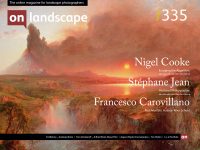Through the art of Frederic Church and George Inness

Francesco Carovillano
Through nature and image-making I keep discovering who I am. The more I grow older, the more these two things merge together.
I’m a full-time landscape photographer mainly working in the forest of Fontainebleau, France.
Premises
The Hudson River School’s artists viewed nature as a manifestation of the divine and strove to represent it as faithfully as possible, until different painters brought their own artistic vision and influences, which at times created interesting contrasting philosophies.
Frederic Edwin Church - The master of details
“Why do precisely these objects which we behold make a world?” Henry David Thoreau asks this question in Walden while observing the landscape around his cabin in the woods. The attempt to reconcile the parts of the landscape and its whole vastness is also an issue for Thoreau’s contemporary, the landscape painter Frederic Edwin Church (1826-1900)
Nineteenth-century viewers expected landscape paintings to balance precision and generality, detail and effect, but Frederic Church’s work often seemed to upset this balance, especially as his career progressed.
Church was celebrated but received conflicted responses in the mid-century. One might wonder if his scientific interests disrupted his ability to offer a broader, allegorical message. “Study the foreground of a Church”, one critic wrote, reflecting on the artist’s career shortly after his death in 1900, “and you will find a constant struggle between the desire to say everything and to say also the large and appealing thing ” - the general atmosphere. Such a “struggle”, in Church’s paintings raises questions about the role of detail in a work of art, not only during the nineteenth century, but also for the contemporary state of landscape photography.
Church’s paintings visualize and historicize a fundamental shift in visual representation.
For the nineteenth-century American viewer, details in a landscape painting had to be small in scale and visually compelling, leading the eye into the foreground and becoming the first points of contact with the spectator. These small details were juxtaposed against a notion often described as “effect”, which was equated with generality, union or harmony. “Effect”, in that period, was not simply a noun to use with an adjective, but rather an idea. An idea to indicate the eventual unification of those foreground details and the suppression of their difference. The aim in landscape paintings was, in fact, to avoid a “detailed effect” while providing an “effect” in which details were forgotten or even repressed, and only a singular impression of harmony remained.


